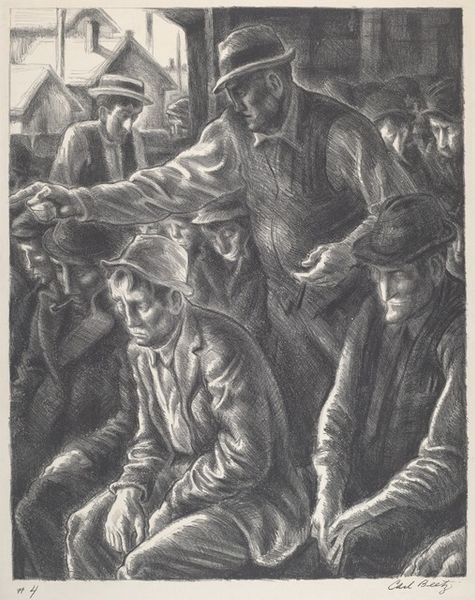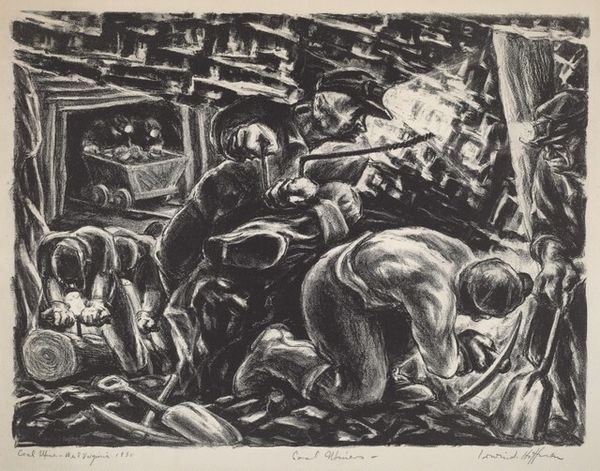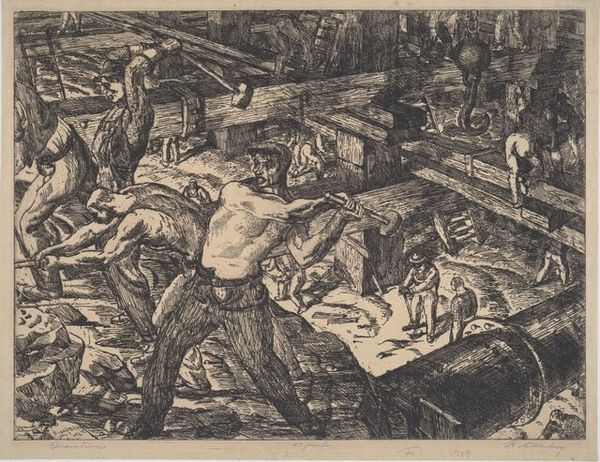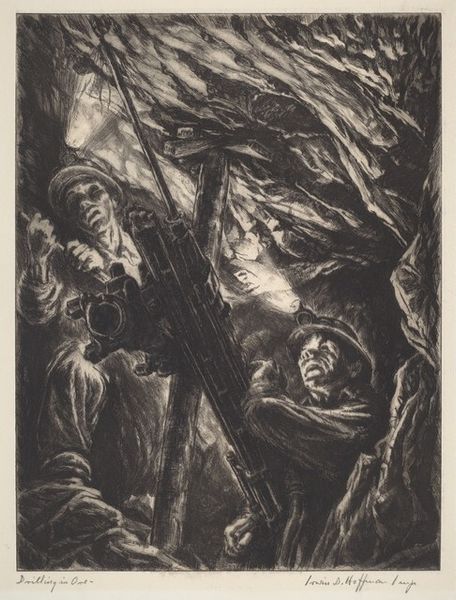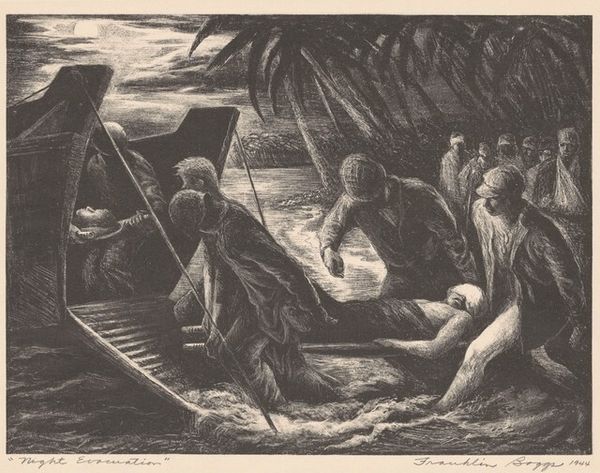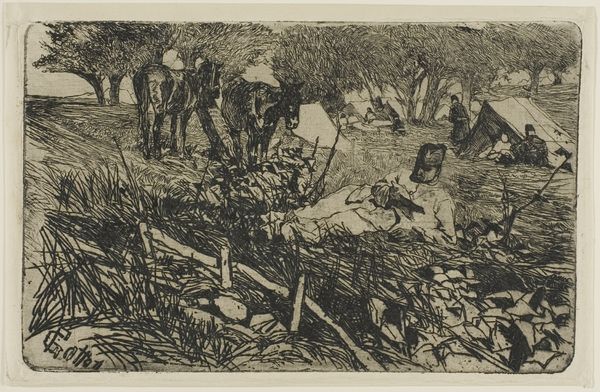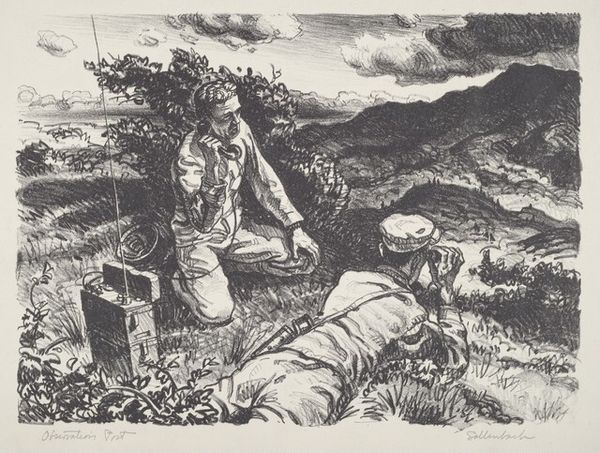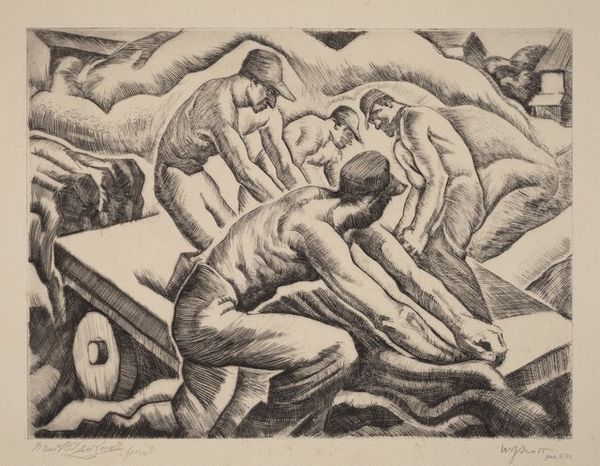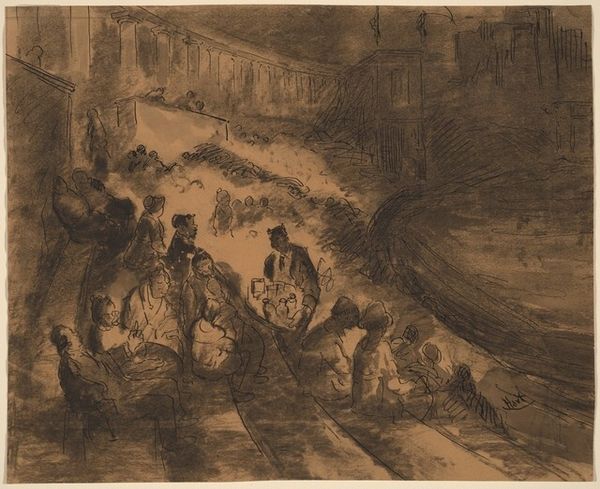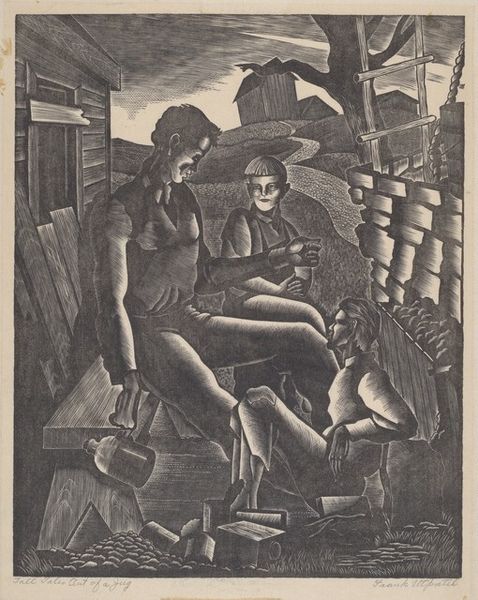
print, woodcut
# print
#
landscape
#
woodcut
#
genre-painting
#
realism
Dimensions: image: 20.32 × 27.62 cm (8 × 10 7/8 in.) sheet: 30.48 × 40.64 cm (12 × 16 in.)
Copyright: National Gallery of Art: CC0 1.0
Curator: This woodcut, dating to the 1950s, is titled "Girl, Gulls, and Fisherman," created by Robert von Neumann. Editor: There’s such a rawness to this. The sharp contrasts give it a kind of grim energy, almost a document of daily toil. You can practically smell the fish and the sea. Curator: It's a great example of post-war American realism, a period of reflection on everyday life and labor. Notice the prominent placement of the fisherman, engaged in his trade. It really elevates the working class, doesn’t it? Editor: Absolutely. And consider the material! A woodcut – each line meticulously carved. It speaks to the labor that goes into both the depicted subject and the artistic process itself. Those simplified forms suggest both efficiency and the grit of repetitive tasks. The social and material context become one. Curator: Indeed. The image participates in a broader artistic and social narrative – the celebration, or perhaps even idealization, of manual labor. Think about the public art projects of the WPA during the Depression, for example, and how that shaped public perception of work. Editor: I see that. It is interesting how von Neumann manages to imbue an inherently labor-intensive medium – the woodcut – with a narrative about work. Those gulls are like an anxious audience. They represent how human actions affect all spheres. The artist’s hand feels exceptionally present here. Curator: And yet it maintains a level of artifice. It's not a direct transcription of reality, but rather a constructed image, playing with archetypes and established visual languages of the period. We're seeing the selective choices in depicting working class realities and artistic presentation. Editor: I see the potential idealization. Still, I think the texture inherent to the medium speaks to the real conditions it reflects, or alludes to. Food scarcity, working hard for simple needs; it feels less idyllic than other artworks I've seen that also represent the everyday. Curator: Ultimately, it’s a piece that prompts us to consider the intertwined narratives of labor, the environment, and the artist's hand in shaping public perceptions. Editor: For me, I'm left thinking about how even the seemingly simple choice of material like wood can load an artwork with so much historical meaning.
Comments
No comments
Be the first to comment and join the conversation on the ultimate creative platform.
